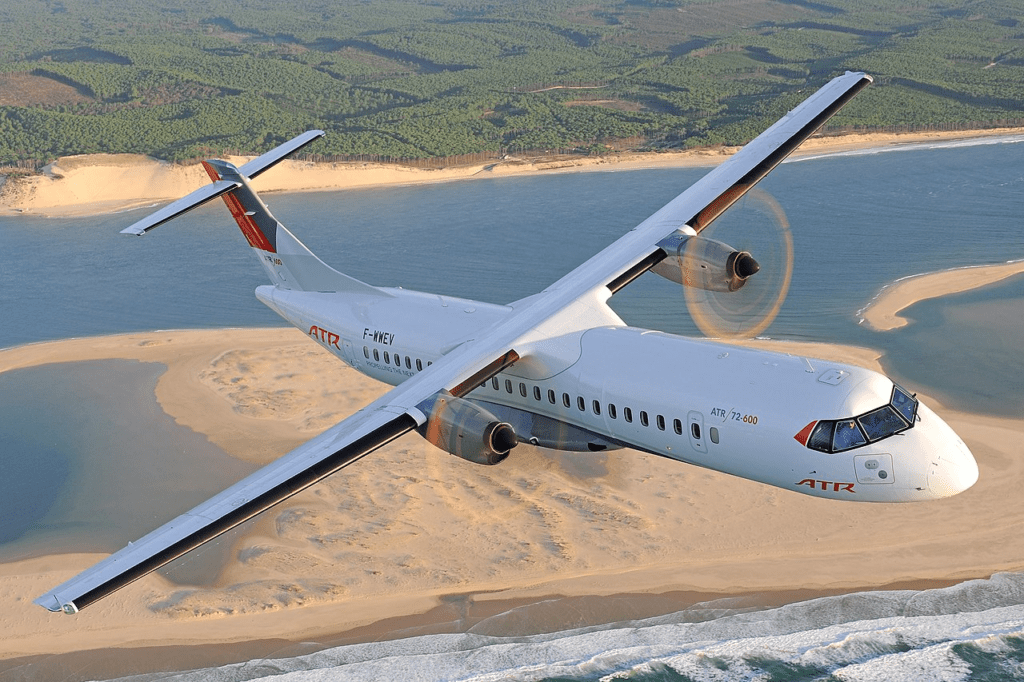
The ATR 72-600 is a regional turboprop aircraft produced by the French-Italian aircraft manufacturer ATR. Regarding the safety record of the ATR 72-600:
The ATR 72-600 has an excellent safety record, with very few major incidents or accidents involving this model. Since its introduction in the early 2000s, the ATR 72-600 has accumulated over 25 million flight hours with a strong safety performance. According to safety data from aviation authorities, the ATR 72-600 has a lower hull loss rate compared to other regional turboprop aircraft. The average hull loss rate for the ATR 72-600 is around 0.08 per million flights, which is considered quite low.

There have been a few incidents involving the ATR 72-600, but most have resulted in minor damage or injuries, with no major loss of life. The aircraft’s design and certification processes are focused on maintaining high safety standards.
The ATR 72-600 benefits from advanced avionics, automation, and safety systems that help pilots manage various flight scenarios. This contributes to the overall robust safety profile of the aircraft.
Pilot training, maintenance procedures, and safety protocols for the ATR 72-600 are also highly emphasized by airlines operating this model to ensure continued safe operations.

ATR 72-600 has demonstrated an impressive safety record since its entry into service, making it a reliable and safe regional turboprop aircraft for passenger and cargo transportation.

Accident and Incident History
Since its introduction in 2011, there have been a handful of incidents and accidents involving the ATR 72-600, but the overall safety record is very good.
The most serious accident was an ATR 72-600 operated by Precision Air that crashed into Lake Victoria while landing in Tanzania in 2022, resulting in 19 fatalities. This appears to be an isolated incident.
Other incidents include runway excursions, bird strikes, and some landing gear issues, but these have generally resulted in minor or no injuries to passengers and crew.
Compared to earlier ATR models, the 72-600 has benefited from design improvements and enhanced safety features that have contributed to its strong safety performance.
Safety Features and Certifications:
The ATR 72-600 is certified to the latest FAA and EASA safety standards, ensuring it meets stringent airworthiness requirements.
Safety features include enhanced stall protection, improved ice protection systems, advanced flight envelope protection, and runway overrun protection.
The aircraft has redundant systems and multiple layers of safety, including backup flight controls, to ensure continued safe operation in the event of equipment failures.
Pilots receive specialized training on the ATR 72-600’s systems and safety protocols to maintain a high level of crew preparedness.
Operational Safety
Airlines that operate the ATR 72-600 place a strong emphasis on maintenance, inspections, and adherence to safety procedures to uphold the aircraft’s safety record.
The ATR 72-600’s turboprop design and operating economics make it a popular choice for regional airlines, which tend to have strong safety cultures and oversight.
Overall, the ATR 72-600’s safety performance has been impressive, with no major accidents attributed to design or manufacturing flaws of the aircraft itself.
In summary, the ATR 72-600 has demonstrated a solid safety record, benefiting from its modern design, advanced safety systems, and the careful operational practices of airlines flying this turboprop regional airliner.





